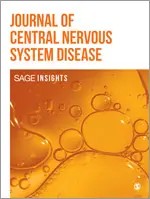A new study published in the Journal of Central Nervous System Disease provides insights into the efficacy of cladribine in the treatment of multiple sclerosis (MS) in real-world clinical practice. This paper uses data from the Czech nationwide ReMuS registry and focuses on the evaluation of cladribine as an escalation strategy in MS patients who showed an inadequate response to previous treatment or if such treatment could no longer be indicated.

Potuznik, P., Drahota, J., Horakova, D., Peterka, M., Mazouchova, A., Matyas, D., Pavelek, Z., Vachova, M., Recmanova, E., Stetkarova, I., Libertinova, J., Mares, J., Stourac, P., Grunermelova, M., Martinkova, A., Adamkova, J., Hradilek, P., Ampapa, R., Dufek, M., Kubala Havrdova, E., Stastna, D. (2024). Real-world effectiveness of cladribine as an escalation strategy for MS: Insights from the Czech nationwide ReMuS registry. Journal of Central Nervous System Disease, 16. https://doi.org/10.1177/11795735241262743 PMID: 39055049
Cladribine, an oral immunomodulatory drug, has been evaluated in more than 600 patients with relapsing-remitting MS. This research has confirmed that cladribine can be an effective treatment option for MS patients even if they have already taken a disease-modifying therapy (DMT) in the past. Thus, the results of the study may contribute to a better understanding and use of cladribine in clinical practice.
Abstract
Background: Cladribine, a selective immune reconstitution therapy, is approved for the treatment of adult patients with highly active multiple sclerosis (MS).
Aims: Provide experience with cladribine therapy in a real-world setting.
Methods: This is a registry-based retrospective observational cohort study. First, using data from the Czech nationwide registry ReMuS, we analysed patients who initiated cladribine from September 1, 2018 to December 31, 2021. Second, we analysed a subgroup of patients who initiated cladribine between September 1, 2018 to June 30, 2020, thus possessing a follow-up period of at least 2 years. We evaluated demographic and MS characteristics including disease-modifying therapies (DMTs) before and after cladribine administration, relapses, Expanded Disability Status Scale (EDSS), and adherence.
Results: In total, 617 patients (335 with follow-up of at least 2 years) started cladribine therapy in the study period (mean age 37.0, mean disease duration 8.4 years, 74.1% females). In most cases, cladribine was administered as a second-line drug, a total of 80.7% had been escalated from a platform DMT. During 2 years before cladribine initiation, the average annualised relapse rate (ARR) was .67. Following cladribine initiation, the ARR decreased to .28 in the first year and .22 in the second year. Overall, across the entire two-year treatment period, 69.0% of patients were relapse-free and the average ARR was .25. As for EDSS development, the median baseline EDSS was 2.5 and remained stable even after 24 months. The adherence to treatment ranged of around 90%.
Conclusion: This nationwide study confirms the efficacy of cladribine in real-world settings, especially in patients who are not treatment-naïve. In addition, the study shows an exceptionally high adherence rate, a finding that underscores the invaluable role of cladribine, but also the value of registry-based studies in capturing real-world clinical practice.
Entire paper is available in English on the website of the Journal of Central Nervous System Disease.

